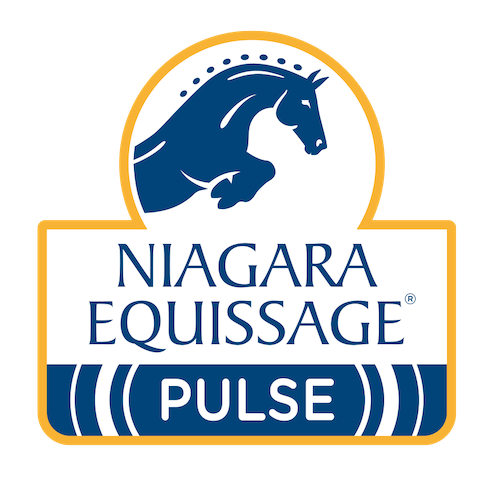Bursal Strains & Injuries
A bursal is an isolated fluid-filled sac. Some occur naturally at potential pressure points (e.g. point of hock) whereas others are acquired due to repetitive low grade trauma.
Bursal strains in horses occurs when damage to the bursae (sacs) around bony areas causes an over-production of the lubricating synovial fluid contained within the joints, and this shows as soft swelling or a bursal enlargement.
Bursal strains can cause;
- Bog spavins
- Wingalls
- Thoroughpins
They are not very serious but may, at the onset, be painful and cause lameness.
Treatment includes rest, cold hosing and massage. Capped hocks, elbows and knees are injuries caused by bursal strains and are often painless, although treatment is often advisable.
Can Niagara Equissage help with bursal strains?
Niagara Equissage can help considerably with all bursal strains and injuries.
Application
For Bog Spavins, please refer to the Bog Spavins page.
For Windgalls treatment, targeted daily use of the Hand Unit or use of the Tendon Boot, ideally in conjunction with the Back Pad, will keep the fluid up under control. The setting for the Hand Unit should be higher rather than lower so as to really move the fluid out of the joint capsule or tendon sheath as the case may be; a 5-10 minute treatment will be sufficient. If using the Hand Unit, try and keep it still rather than moving it around.
For thoroughpins, the Hand Unit should be used daily as part of the management routine on and around the site of the swelling for 5-10 minutes on a medium to high speed. As with other bursal swellings, try to avoid constantly moving the Hand Unit around.

Testimonials
See All- "Niagara Equissage definitely helped SABELLIENA be at her best after her long campaign prior to winning the CARDINAL. We use it a lot and the horses love it."
- “Niagara Equissage is an essential piece of equipment we couldn’t do without. All our horses benefit from regular treatment.”
- Team Fredericks Eventing
Over the past few years our results have been fantastic, with many top wins. This last season has included Olympic Team silver for Australia and winning the World Cup of Eventing for the second time, only 6 weeks after the Olympic Games in China! It’s vital that the horses remain healthy and happy if they are to perform at their best consistently. Two products have proven to be invaluable – AfterAce and Brandes Formula.

